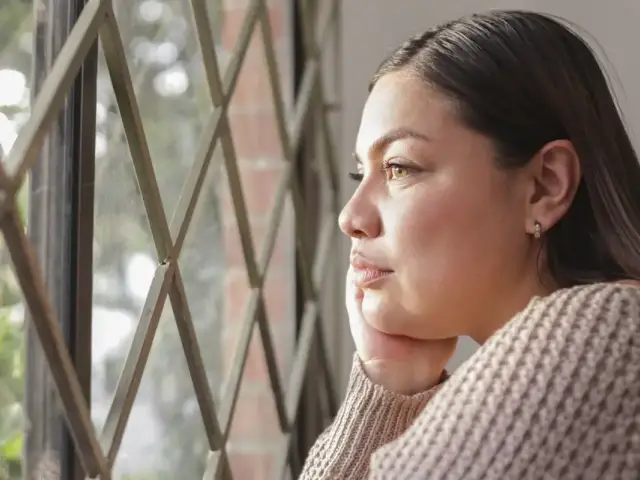Eat healthfully, exercise more, drink less alcohol, quit smoking, practice sleep wellness…
These lifestyle interventions are commonly recommended by doctors as part of the treatment or prevention of serious and common health conditions such as heart disease, obesity, stroke, cancer, and diabetes.
The evidence shows that these lifestyle interventions and changes in one’s daily habits not only improve health but even prevent disease.
Doctors use measurements such as blood pressure, lipid levels, blood glucose, and weight to inform their conversations with patients about lifestyle changes, but from my experience as a psychiatrist who has spent a lot of time treating Mental health conditions in the primary care setting, there is one score that is often not explicitly discussed: your ACE score. (If you’d like to calculate your score, you can do so here.)
What is an ACE (adverse childhood experience) score?
An ACE score is a tally of different types of adversity you may have encountered during your childhood.
Extensive research suggests the higher your score, the higher your risk for serious health conditions later in life. ACEs are often considered a social determinant of health (SDOH) because they are often linked to broader social factors like poverty, violence, discrimination, and bias.
In spite of their relevance to health, ACEs are not usually discussed in adult healthcare interactions. Some studies suggest that less than 10 percent of patients are asked about ACEs.
In my view, this often represents a missed opportunity because a high ACE score may reveal the invisible headwind that explains why some people struggle to implement recommended lifestyle changes or are not progressing as expected.
When it comes to understanding the role of behavior in implementing healthy lifestyle interventions, I have found great value as a Mental health professional in the ACE study’s exploration of the link between ACEs and risk factors for many of the leading causes of death in adults. Children exposed to adversity, in an attempt to deal with the associated psychological distress, take on risky behaviors such as smoking cigarettes, abusing alcohol or drugs, eating unhealthy food, having an inactive lifestyle, or being sexually promiscuous. Such high-risk behaviors correlate closely with diseases like lung cancer, obesity, heart disease, diabetes, and HIV.
The limitations of an ACE score
To be clear, there is much ongoing debate about the scientific value of routinely screening for ACEs in primary care settings.
Proponents argue that an ACE score should be considered a fifth vital sign in the evaluation of a patient (the other four being temperature, pulse rate, respiratory rate, and blood pressure). Critics argue there is a lack of data demonstrating that ACE screening programs lead to any clinical benefit for any one individual.
There are other limitations to the ACE score, the main one being that it remains a relatively crude measure of cumulative childhood stress exposure and not a standardized assessment of childhood exposure to stress.
Limitations of the actual score aside, there are additional barriers that prevent doctors from talking about ACEs with their patients. Some of these barriers are related to gaps in the doctor’s ACE knowledge, general discomfort in asking patients about their trauma history, and the doctor’s belief that ACE screening will offend or retraumatize patients.
Logistical barriers consist of a lack of time and support staff to screen for ACEs, multiple or competing primary care screening recommendations, inadequate insurance reimbursement for screening, and limited places to refer patients with a high ACE score for behavioral health help.
In contrast, other studies suggest that patients understand the relevance of ACEs, and most do not object to being asked about them by their doctor. Indeed, many patients report they would like to be asked about their ACEs if it is done in a sensitive and supportive manner.
Let’s not throw the baby out with the bathwater
The way I see it, a patient’s ACE score is an underutilized metric that can help both patients and doctors better understand why a patient may be struggling when it comes to making important lifestyle changes.
While the ACE score has its imperfections, it is a good starting point and can be helpful with the following:
-
Empowering patients: Knowing their ACE score can empower patients to “connect the dots” between their earlier life experiences and some of their current health challenges. They can start to take ownership of their health and seek necessary support to manage the effects of childhood adversity.
-
Improving patient-doctor communication: When it comes to making meaningful lifestyle changes, references to invoking willpower, having better time management, being more committed, or being more positive in our thinking can feel reductive.
An ACE score can serve as a numerical representation of a patient’s journey to this point. It can help doctors meet patients “where they are at” and collaborate with them to develop a plan for better health that focuses on attainable goals.
Discussing ACEs can make a previously invisible headwind visible and open up a deeper conversation with the patient, build trust in the patient-doctor relationship, and allow patients to feel validated about their experiences.
-
Identifying the need for referrals: Knowing a patient’s ACE score can help a doctor when it comes to decision-making about when and where to make referrals to other specialists, including Mental health professionals.
Conversely, a doctor-led discussion about the relationship between their high ACE score and their physical health may help a previously ambivalent patient take the first step in addressing their health behaviors with a Mental health professional.













